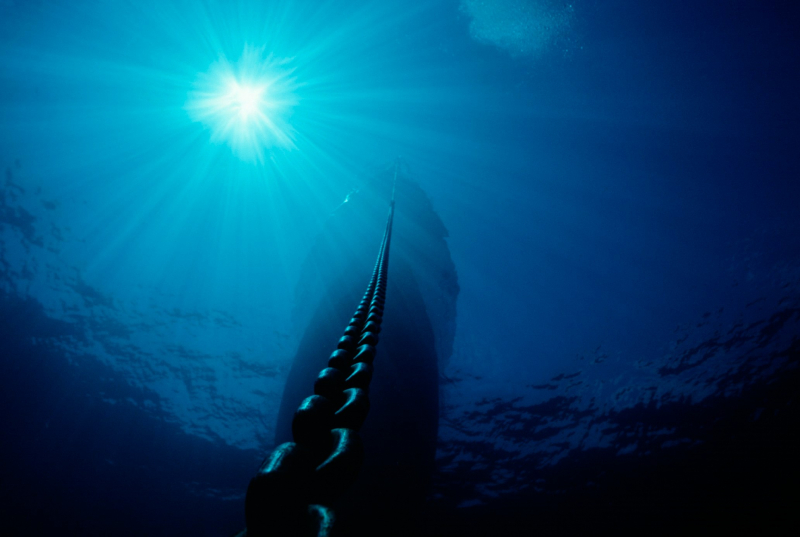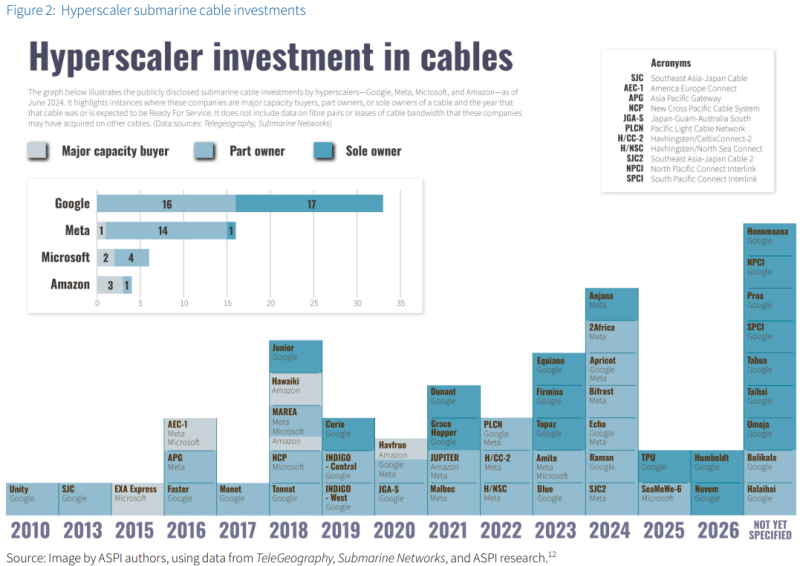Over the past ten years, the capacity of international undersea communications links controlled by hyperscalers like Google, Meta✴, Microsoft and Amazon has grown from 10% to 71%. The Register reports, citing data from the Australian Strategic Policy Institute (ASPI), that this has completely changed the industry and even put critical infrastructure at risk. ASPI emphasizes that the impact of hyperscalers is still not being taken seriously. Meanwhile, the largest IT companies are turning from cable users into cable owners.
Moreover, it is the growth of their services that drives the growth of cable infrastructure. This has both positive and negative sides. According to Telegeography, Google became a co-owner of 33 submarine cables, Meta✴ – 13 cables, Microsoft – five, and Amazon – four. As a result, hyperscalers gained control over the entire chain of Internet services, from content creation to storage, processing and transmission of information.

Image source: Jim Beaudoin/unsplash.com
The former telecom operators are also suffering, their share is rapidly decreasing. They are simply unable to compete with the incredible resources of megacorporations. Moreover, cable stocks and resources for their production are very limited. As a result, it is usually the big players who decide what the capacity of the cables will be and where exactly they should be laid. ASPI claims that previously digital highways connected cities that served as connection points to landline lines, but now owners primarily provide communications to their own or partner data centers.
Although overall progress even promises some benefits for users, the overall level of control of IT infrastructure by hyperscalers raises serious questions, including those related to security and the risk of large-scale failures. If networks are compromised, the consequences can be dire, even disrupting global communications. In addition, hyperscalers may prioritize traffic from their own services to the detriment of competitors. The consequences of the overconcentration of resources in one or another IT company can be assessed by the recent global failure of the Windows OS, which affected more than 8 million computers.

Source: ASPI
Geopolitical factors are also aggravating the situation. Certain countries are capable of not only damaging other people’s Internet infrastructure, as allegedly happened in the Red Sea, but also financing cables in other countries, spreading their influence. For example, at one time the Solomon Islands chose Huawei Marine to lay an undersea cable to Australia. However, the latter literally forced Huawei out of the project, citing security problems, and itself allocated $74 million for construction.
The US, Australia, China and Japan often finance cable construction in the Pacific, and the intervention of hyperscalers only complicates the situation. ASPI emphasizes the need for government oversight of the industry, with regulatory adjustments and regular oversight to prevent anti-competitive behavior and actions contrary to national security interests. Recently, experts and politicians at a meeting in Singapore voiced a simple truth – in fact, the most important infrastructure is now outsourced to private companies, almost free from laws and responsibility for the content distributed.